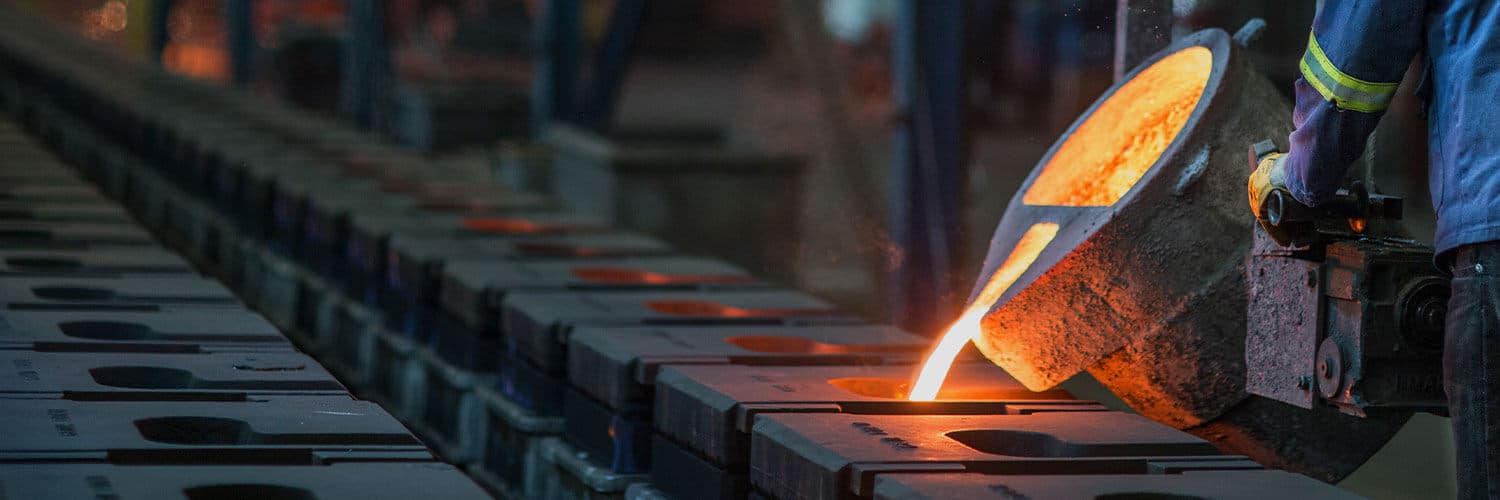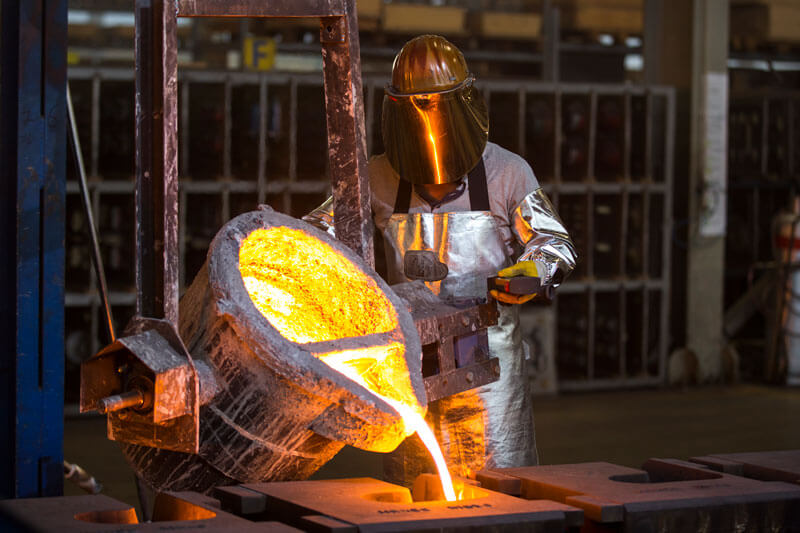Investment Casting

Investment Casting
Investment casting is a procedure that allows the casting of parts that are hard to produce at the desired quality. It is a technique that accelerates prototype studies and mass production. Thanks to this method, parts with smooth surfaces can be obtained with minimal processing cost.
What is Investment Casting?
Investment casting refers to the extraction of the wax material from the mold after its encapsulation in ceramic, followed by the pouring of molten metal into the mold. This method is ideal for the production of small and hard-to-cast parts. Many metals, such as steel alloys, aluminum and stainless steel, can be used in investment casting.
Quick Look at Investment Casting Features
- Provides freedom in the choice of the design and alloy,
- Ensures high quality detailed parts, with high precision in measurement,
- Provides high-quality, smooth surfaces thanks to its means of application and mold material,
- Can be used for parts of minimal weight and size,
- Allows the casting of parts that cannot be subjected to chip removal or heat treatment afterwards,
- Allows for the integration of wax models.
What are the Stages in Investment Casting?
For investment casting, the part is first modelled using materials such as wax. In this process, the model may be upscaled to account for post-casting contraction. A model tree is prepared containing models that are similar to the part in weight and size. Care must be taken here not to place fine and coarse models on the same tree.
Bunch models attached to the tree are submerged in ceramic slurry for refractory lining. A shell is obtained by covering the bunches with ceramic powder. After the shell has dried, the wax is emptied, the part is put into the kiln and the model is removed by melting the wax. In cases where parts of the model are not melted, molten metal is poured into the gaps. In the shell cracking stage, the ceramic is broken apart after the metal has solidified, and the part is removed. The final stage includes surface cleaning, polishing and grinding operations. The parts are ready for use after passing quality inspections.

The Advantages of Investment Casting
The main advantage of investment casting is the ability to mold small parts with a complex structure. Materials that are very hard to process can be cast in this way. As a premium surface quality is achieved, the size precision is increased. As a block mold is used in the process, there are no traces on the product after casting. A large amount of casting can be made in a short time. Investment casting also brings cost savings. If products are cast in one piece, machining operations and welding and assembly costs are minimized. The ability to reuse the wax mold materials in subsequent processes is a further advantage.

History of Investment Casting
Investment casting dates back to 3000 BC, and was carried out in both Egypt and China. It was developed for commercial use in dentistry and goldsmithery during the first half of the 19th century. It is used to create filling materials in dentistry, and for the production of jewelry in goldsmithery.
Usage Areas of Investment Casting
The investment casting technique may be used in all sectors where metal parts are needed in production. Investment casting can be used to create weapon parts, such as for pistols and rifles, for electrical appliances such as microwave ovens, pumps and valves, and for textile machines, jet engines, central heating boiler cores and gas turbines.
What Different Types of Investment Casting are there?
There are two forms of investment casting: flask casting and shell casting. In both methods, following the preparation of the wax model, the wax is melted at a certain temperature and then removed. Investment flask casting is carried out differently for ferrous and non-ferrous alloys. The plaster used in non-ferrous alloys can not be used as refractory material in others. Ferrous alloys on the other hand, require pre-molding.
Investment shell casting is used mostly for steel and carbon alloys and for stainless steel castings. The key issue here is that the metal needs to resist heat treatment at over 1,100°C. The wax is submerged in a ceramic powder slurry that sets immediately. The refractory material is fixated onto the moistened surface by spraying. This operation is repeated until the thin shell reaches a thickness of 5–15 mm. The aim in this pre-coating operation is to obtain a smooth surface. In the final stage, the mold is heated and made ready for casting.
What are the Differences between Sand Casting and Investment Casting?
The main difference between sand casting and investment casting is in the sizes and weights of the parts. Investment casting is used for the casting of very small and complex parts, whereas sand casting is used to mold very large parts. The surface of the part removed from the mold is smooth in investment casting, while the products of sand casting may require a second operation for the separation line. The production stages of these casting methods also differ. In investment casting, molds are produced using liquid slurry, allowing the production of complex shapes. In sand casting, on the other hand, the part is shaped by compressing the sand.
What Parts Do We Cast with Investment Casting?
The types of metal cast by Gedik Casting can be listed as follows:
- Pig Iron
- Duplex Stainless Steel
- Tin Bronze
- Nodular Pig Iron
- Aluminum Bronze
- Steel
- Copper Alloys
- Stainless Steel
- High Chrome Cast Irons
Areas in which Gedik Casting Provides Investment Casting Services
Gedik Casting serves the following sectors:
- Automotive
- Agricultural machinery
- Textiles
- Defense
- Energy
- Healthcare
- Mining
- Construction
- Processing industries
- Mechanics
- Shipbuilding
- Chemical
- Pumps and valves
- Electrical energy equipment
- Firearms
Gedik Casting and Investment Casting
As an investment casting company, Gedik Casting serves with advanced casting technologies. Casting is carried out by experienced and highly qualified engineers using modern production techniques and quality control equipment. Following the part design stage, 3D drawing an simulation solutions are offered to ensure the control of the production stage. The casting of parts weighing 1–35 kg is carried out on the wet sand line of the investment casting factory in Hendek, Sakarya, which covers and area of 6,000 m2. The resin line of the same factory handles the casting of parts weighing 5–2,500 kg. The investment casting process allows for the production of parts weighing 100 gr to 45 kg. As any kind of metal can be processed, we are able to fully meet the needs of our clients as solution partners.
An Overview of Investment Casting and Other Casting Types
Capacity
Post-cast Operations
- 2 hanging shot blasting machines
- 2 drum blasting machines
- 4 hand blasting machines
- Belt grinding
Wax Injection
- 2 horizontal 30-ton wax presses
- 3 vertical 25 ton wax presses
- 2 vertical 50 tonne candle presses
- 1 mobile wax press
Ceramic Line
- 4 continuous and controlled ceramic baths
- 1 sprinkler
- 2 fluidized beds
Training
- 2 pieces of 100 kg medium frequency induction furnace